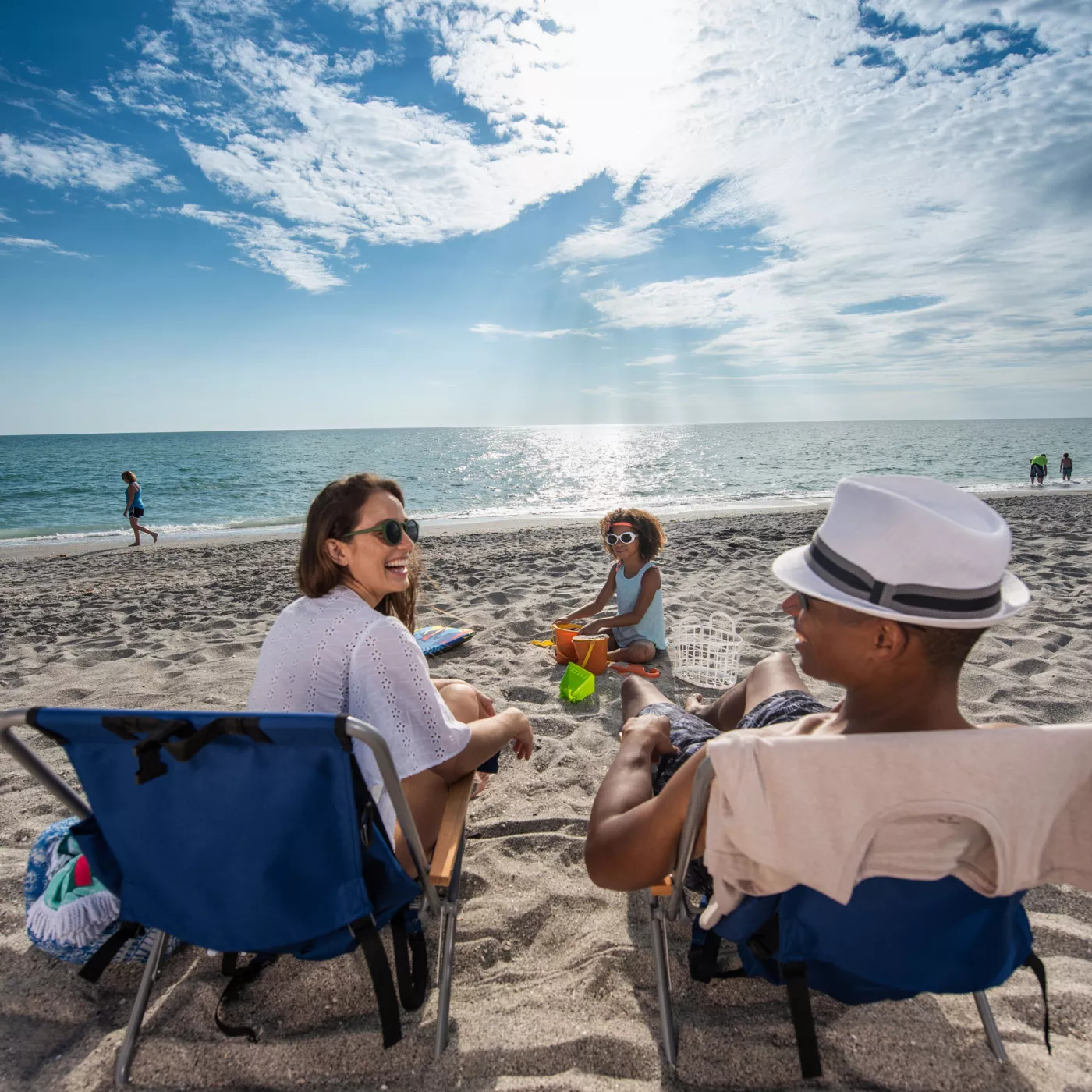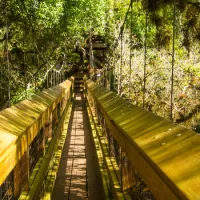Historical Walking Tour of Sarasota's Gillespie Park and Rosemary District
Take a walking tour of Gillespie Park and the Rosemary District that highlights architecture and history of the area.
Take a walking tour of Gillespie Park and the Rosemary District that highlights architecture and history of the area.
This walking tour spans approximately 3 miles from start to finish through the historic neighborhood of Gillespie Park and the Rosemary District, located to the immediate north of downtown Sarasota.
This tour includes optional stops for breakfast or lunch in the first and final miles of the tour at Station 400 and Maximillian’s Cafe—or feel free to grab a bite in any of the other charming eateries you discover along the way! View an interactive version of the map below or by clicking here.
- The Historic Downtown Village Shops: When Sarasota’s first developer John Hamilton Gillespie arrived from Scotland in 1886, he designated the area now known as Gillespie Park to be used as experimental farmland, but the soil was unsuitable for farming, so residential subdivisions were platted beginning in 1913. The majority of historic homes you’ll see in Gillespie Park were built in the American Craftsman Bungalow style during the Florida Land Boom of the 1920s. Today, a number of those buildings make up the colorful Historic Downtown Village Shops that border Gillespie Park at Fruitville Road. Find free parking and shade (if you’re lucky to nab a spot beneath the Spanish oaks) in the open lot and explore the shops. An iced tea to-go from the Tea House, housed in a cozy 1925 bungalow, will keep you cool as you stroll to your next stop.
- The ‘Boat House’ and ‘Lighthouse House’ — 425 N. Osprey Ave: Two of the most unusual structures in Sarasota are located in Gillespie Park. The Boat and Lighthouse Houses were built in 1933 for Arthur Rowe, yacht captain to influential Sarasota businessmen, John Ringling and William Selby. The homes were built by Oliver Blackburn, a well-known boat builder of the era. Rowe ran away from home as a teenager to become a sailor, and was eventually hired by Ringling in 1910 to captain his luxury boat, Arvida. He captained for Ringling until 1921 and later for Selby before retiring to his dream home — an livable boat built on land — circa WWII. Today, Rowe’s Boat house and accompanying small three-story residence built in the shape of a lighthouse serve as quirky rentals in the heart of the historic neighborhood.
- The Citrus Exchange Building + Brunch at Station 400 — 1525 4th St: You’ve entered the Rosemary District, where a rare stretch of original brick-paved street runs between the historic Citrus Exchange Building (currently the nighttime restaurant-lounge, Servandos) and Station 400, a charming eatery housed in an 1850s train depot that was relocated from Indiana. The Florida Citrus Exchange was created in Tampa in 1909, launching Florida’s booming citrus industry. A massive crop in the 1925-26 growing season resulted in over 14 million boxes of tangerines being shipped from regional packing houses—that’s over a thousand train cars filled with citrus! Darwin’s Brewing Co., which until recently operated in the old Sarasota Citrus Exchange building, celebrates local history with its ‘Circa 1926’ tangerine wheat ale, which can be found in grocery stores throughout Florida today.
- Neighboring Station 400 is a breakfast and lunch favorite, infused with over 150 years of history in an 1852 train station.
- Payne Chapel AME Assembly Church — 513 Central Ave: The African Methodist Episcopal Church (AME) building, built in 1926, is an important historical structure at the heart of Sarasota’s Rosemary District. The Rosemary District, formerly known as Overtown, was home to Sarasota’s first black settlers and remained a primarily black community through the 1960s. The original Payne Chapel AME was a one-room frame building, built in 1903, and replaced by a larger frame structure in 1914. That second structure was destroyed by a hurricane in 1926 and replaced once again by the hand-masoned concrete block building that today houses Hall Architects. Payne Chapel was named after Daniel Alexander Payne, who was elected AME bishop in 1852. The church served Sarasota’s black community until the 1970s, when a new Payne Chapel was built on 19th St. and Central Ave. Though the building was abandoned and condemned in the 1970s and 80s, restoration and historic preservation efforts in recent decades have made the old AME church a cornerstone in the renewal of the historic Rosemary District.
- Rosemary Cemetery — 801 Central Ave: Sarasota’s first cemetery, just under 300 x 300 square feet, has approximately 740 gravesites with 380 recorded burials dating between 1887 and the present day. It was platted in 1886 at what was then the northwest corner of what would become the town of Sarasota. Important figures at rest in Rosemary Cemetery include Sarasota’s first town mayor, J.H. Gillespie, its most influential developer, Owen Burns, its first physician, Dr. Jack Halton, and Rev. Lewis Colson—one of the first surveyors to land in Sarasota in 1884 and a prominent member of the black community. A pergola in the center of the cemetery is a gift dedicated in 1911 by Bertha Palmer, another highly influential landowner and business figure in Sarasota’s history. Many graves remain unmarked in Rosemary Cemetery, largely due to the fact that during the 1930s Depression Era, many families could not afford tombstones for their loved ones.
- Rosemary Court — 810 Central Ave: The Rosemary Court Wellness Center is another cornerstone of the historic Rosemary District. A charming gated garden and koi pond make up the courtyard enveloped by four 1920s homes that have been converted into health and wellness spaces, including a yoga studio, massage studio, an acupuncturist, and a birthing center. Rosemary Court is an example of successful restoration and revival efforts in the modern Rosemary District.
- Circus City and Sarasota Architectural Salvage Shops — 1001 & 1093 Central Ave: You don’t find gift shops where you can literally bring home pieces of local history — but the Rosemary District’s salvage shops are rare treasures. Pop into Circus City Salvage to escape the sun and who knows what you’ll discover! Named in honor of Sarasota’s rich circus history, Circus City Salvage is filled with neat antiques, vintage kitsch, local architectural salvage, and one-of-a-kind souvenirs.
- Sarasota Architectural Salvage is just down the road at 1093 Central Ave. This nationally-recognized salvage warehouse features incredible diamonds-in-the-rough: items salvaged from historic building demolitions throughout Sarasota and Tampa — as well as one of a kind upcycled art and furniture and vintage memorabilia.
- City Waterworks Building — 1015 N Orange Ave: The Town of Sarasota was incorporated in 1902, but it would be seven years before sewage and water mains would be laid. Prior to 1909, the town’s water supply was limited to shallow wells and water cisterns. The new water line provided drinking water for Sarasota’s growing population and provided pressure for the first fire hoses. In 1924, the City Council sought the issuance of bonds to raise money for upgraded water and power plants. The City Waterworks main pump house was built in 1926 at 1015 N Orange Ave, using high-grade fireproof construction materials. It is an example of the popular Mediterranean Revival style of the time (note the barreled terra cotta roof tiles), though unique in its use of fired bricks — a more industrial element.
- The Binz Building — 1071 N Orange Ave: In need a de-mothing? The Binz Fireproof Warehouse was built in the 1920s as a storage space for Sarasota’s most wealthy seasonal residents — the original ‘snowbirds’ — to house their furniture, clothing and other household goods. The Binz was known for its state-of-the-art PlymetL Vault — a safe-like, airtight steel container used to protect valuables from moths, fire and theft. The Binz advertised that after 24 hours in the vault, all insects would be extinguished — making ‘de-mothing’ maintenance perhaps the only reason to bring a fur coat to Florida. The Binz was built by Frank Binz Sr., who ran a successful storage business in Chicago prior to moving to Sarasota in 1923. It was strategically located alongside the Atlantic Coastline (A.C.L.) Railway. Today, the historic Binz serves as the base of operations for the Westcoast Black Theatre Troupe.
- Hungry? Keep an eye out for Maximillian’s Cafe (1695 10th St) on your way to the tour’s final stop. This ‘Mom and Pop’ sandwich shop has been a local favorite in Gillespie Park since 1997, but it’s retained ‘hidden gem’ status for nearly 20 years.
- Gillespie Park — 10th St and Gillespie Ave: The Gillespie Park subdivision was platted in 1917, and majority of its homes were built during the mid-1920s when the Florida Land Boom was in full swing. Developer Owen Burns sold a parcel of land adjacent to the subdivision to the City in 1924 to use as a public park dedicated to Sarasota’s first mayor, J.H. Gillespie, who died in 1923. A $75,000 bond issue funded the development of lawn bowling, tennis courts a playground, and a natural history museum. In 1925 the Gillespie Park playground won a national beautification award. In 1977, the Hispanic-American Civic Association installed the Gallery of Patriots, which features busts of approximately two-dozen political leaders and revolutionaries from the western hemisphere, including Abraham Lincoln, Simon Bolivar (Venezuela), José Martí and Ignacio Agramonte (Cuba), José Artigas (Uruguay), and Thomas Jefferson.
- From Gillespie Park, follow Gillespie Avenue south toward 4th Street, and you’ll return to where you started, at the Historic Downtown Shops.

![Boat parking at The Crow’s Nest in Venice [Photo: Lauren Jackson]](/sites/default/files/styles/popular_stories_teaser/public/2023-import/The-Crow%2527s-Nest-cropped__OPT.jpg.webp?itok=ycs37M-O)


